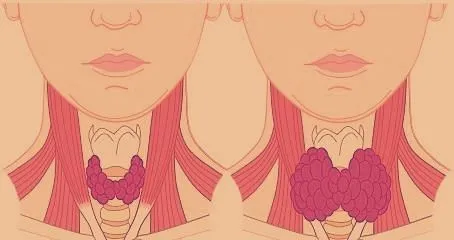Srinagar: The prevalence of iodine deficiency has decreased in the Valley in the last few years, reveals the survey conducted by Government Medical College (GMC) Srinagar.
According to the official data, 4 percent of children had grade 1 Goiter (palpable Goiter not visible when neck is held in normal position) and 1 percent selected population had Grade 2 Goiter (a clearly swollen neck (also visible in normal position of the neck) that is consistent with a goiter on palpation. These grades were found in four districts Bandipora, Ganderbal, Kupwara, and Shopian.
Earlier, 15 years ago, Grade 1 Goiter was found in 30 percent of the population and Grade 2 in the 4 percent population in Kashmir.
The Government Medical College (GMC), Srinagar conducted the largest Goiter survey to check the Iodine Deficiency among the children in Kashmir.
The ten days of survey was financed under National Iodine Deficiency Disorders Control Program (NIDDCP).
Dr Mohammad Saleem Khan, HOD Community Medicine, GMC told Greater Kashmir that they didn’t find iodine deficiency among the children in these four districts.
He said the department had selected four districts to conduct the goiter survey and check the iodine deficiency among the school children aged between 6 to 12 years.
“Over the years , the overall situation has improved a lot. Our teams from the Community Medicine department visited far flung areas in Bandipora, Ganderbal, Kupwara, and Shopian. We had set the target of covering 2700 children in each district. There are around 10800 children in four districts,” he said.
Dr Saleem said that besides physical examination, their team collected the urine samples from 10 percent of the population of children. ” We have even done a salt intake assessment. To check the iodine content of salt and urine was an important part of the survey. We have found a good content of iodine,” he said.
Dr Saleem said that four years ago the department had done the survey in four districts Srinagar, Budgam, Anantnag and Baramulla.
He said, “During our survey, we have found 10 percent of children had grade 1 Goiter and 1 percent of the selected population had Grade 2 Goiter. These grades were found in Anantnag, Baramulla, Budgam and Srinagar districts,” he said.
He said that thyroid disorders are highly prevalent “especially hypothyroidism that has been reported in Kashmir.” Dr Saleem said that people in Kashmir should not keep the container of salt open as the iodine evaporates.
” Though people are consuming a good amount of salt, we need to take care of iodine content. Containers of salt should always be a tight lid. We should also avoid storing the salt for a long time as the iodine contents get lost,” he said. He said that some people, especially in far-flung areas, are still consuming rock salt. Iodized salt is very important.
In order to address Iodine Deficiency Disorders, such as goiter, sub-optimal mental development, poor cognitive function, the central government had launched the National Goiter Control Programme in 1962 to replace ordinary salt with iodized salt. In 2005, universal salt iodization was made mandatory in the country.
Iodized salt is the primary source of Iodine in the daily diet. According to the World Health Organization (WHO), iodine-deficiency disorders, which can start before birth, jeopardize children’s mental health.
The deficiency reduces intellectual capacity at home, in school, and at work. Serious iodine deficiency during pregnancy can result in stillbirth or spontaneous abortion.






